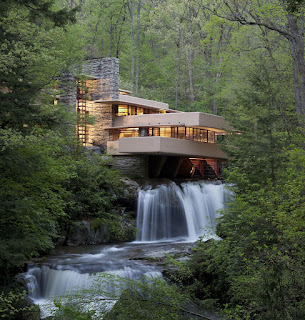Frank Lloyd Wright: The Visionary Who Redefined Modern Design
Frank Lloyd Wright, one of the most influential architects of the 20th century, left an indelible mark on the world of architecture with his revolutionary designs and innovative approach. Born in 1867, Wright's career spanned over seven decades, during which he pioneered a unique organic style that seamlessly integrated buildings with their natural surroundings. His visionary philosophy and attention to detail transformed the architectural landscape, establishing him as an icon of modern design.
Wright's architectural philosophy, famously coined "organic architecture," emphasized the harmonious relationship between human habitation, the natural environment, and the use of locally sourced materials. He believed that buildings should be in harmony with nature, blurring the boundaries between indoors and outdoors. Wright's designs often featured open floor plans, abundant natural light, and integration of natural elements such as water features and gardens. His most iconic work, Fallingwater, exemplifies this philosophy, as the house appears to float above a waterfall, seamlessly blending with the surrounding landscape.
Throughout his career, Wright designed a wide range of structures, including private residences, public buildings, and museums. His residential designs, known as "Prairie Houses," were characterized by low-pitched roofs, overhanging eaves, and open interior spaces that emphasized a sense of unity and connection. Wright's bold and geometric forms challenged traditional architectural norms, and his use of innovative materials and construction techniques showcased his commitment to pushing boundaries.
Beyond his architectural achievements, Wright's influence extended to the field of interior design, furniture design, and urban planning. He believed in creating a holistic experience by designing every aspect of a space, from the building's structure to its interior furnishings. Wright's iconic furniture pieces, characterized by their clean lines and organic forms, remain timeless classics to this day. Furthermore, he envisioned the concept of "Broadacre City," a decentralized and self-sufficient urban planning model that prioritized open spaces and individual freedoms.
Frank Lloyd Wright's visionary approach to architecture continues to resonate with designers and enthusiasts worldwide. His ability to seamlessly merge nature with built environments, coupled with his innovative use of materials and attention to detail, revolutionized modern design. Wright's lasting legacy lies not only in his iconic structures but also in his belief that architecture has the power to enhance the human experience and forge a deeper connection with the world around us. His influence is felt in every corner of the architectural world, inspiring generations of architects to push boundaries and redefine what is possible.



Comments
Post a Comment